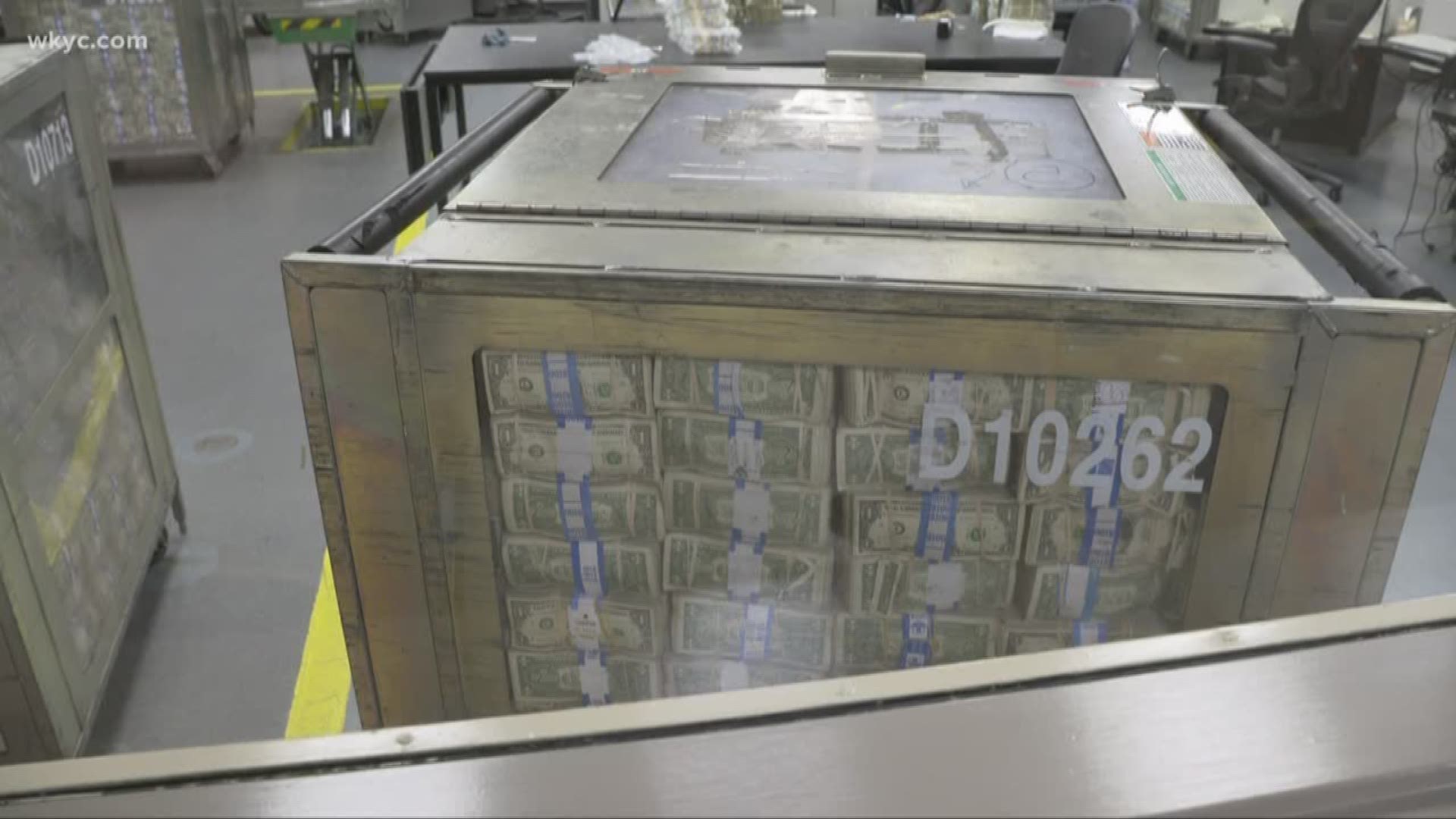CLEVELAND — When I walked into the huge vault and looked to its ceiling, my eyes bulged almost to the size of half-dollar coins. I was looking at so many U.S. currency bills, I knew if I had a lifetime to, one-by-one, count each bill, I would never make it.
"This is where we store the currency," said Brad Smith, senior operations manager for the Cleveland Federal Reserve Bank. "We have 1,362 positions," he added in a nonchalant voice. Each position, or box, is about the size of a large refrigerator.
The tour of the federal reserve bank at the corner of Superior Avenue and East 6th Street was part of a story I was producing and reporting for WKYC Channel 3. Cameraman Steve Pullen and I were able to get out cameras in the vault which is four-stories high. In the vault, which is really a building inside the historic federal reserve structure, there was a constant humming as electric cart robots were dispatched to the various areas of the vault to retrieve the glass carts, each filled with money of varying denominations.
From the vault, the machines, with their flashing lights and beeping sounds, moved effortlessly to counting rooms where employees counted the cash which would eventually be destined for the commercial banks you and I use.
All around, both inside and outside the building, which was constructed in 1923, there is abundant security—both in human form and with ever-watchful cameras. The Cleveland office is one of twelve of the federal reserve bank system in the country. Cleveland covers this part of the country.
However, there are many jobs for the federal reserve. "We insure that the money that you have first and foremost stays safe in the (commercial) bank so we audit the banks as part of our supervision function," said Mouneer Ahmad, vice president of the Cleveland office.
All the while he spoke in a hallway, on the other side of glassed-in offices were employees handling bundles of money. Every few minutes, another robot carrier would beep its way through the hallway bringing more cash to be counted or distributed. Depending on denominations the cart was carrying, each could handle from $2-to-$3 million on each run. Sometimes a machine could have as much as $43 million in it, easily seen through its glass sides.
The Cleveland Federal Reserve offers public tours throughout the week, but most people on the tours do not get this close to the money. However, there are areas visitors can see large amounts of cash from very secure locations.
Interestingly, the bank also destroys money. But those bills which are shredded are deemed unfit for use because they are old and tattered. So into the shredding machine go those pieces of currency. Some of the shredded money ends up as compost for gardens.
The Federal Reserve also monitors each bill to insure its authenticity. Counterfit bills are easily spotted by machinery and kicked out for eventual destruction.
On the first floor of the museum, which is a beautiful structure, there is the Money Museum where visitors can learn about the history of American currency and see how currency has evolved over the centuries. There is even a money tree which is a huge artificial tree, the leaves of which have been replaced by small replicas of past U.S. currencies. Who says money doesn't grow on trees. It goes at the Cleveland Federal Reserve Bank.

